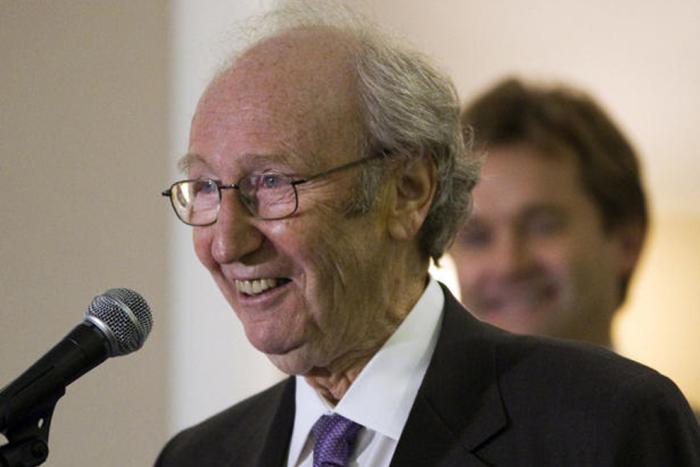I’m a poet, which means that when I’m not wishing I were a musician, I’m wishing I were a painter. There are lots of reasons to be jealous of painters. As a rule, people like them better than poets, and give them more money for what they make. Near my house, there’s an old building that someone told me used to be a bathtub factory but that is now divided into lofts. Most of them are apartments, but on the bottom floor there are several being used as artist studios. When I walk by, sometimes one of the blacked-out industrial-size windows is cracked open and I can see in to the exciting mess of paint and electrical cable and dirty brushes and analog recording equipment and ladders and newspapers. It’s like a brain full of vivid ideas splattered onto the physical world. My workspace, which is also my living room and kitchen, is on a bottom floor, too, but when you look in the window you just see a table with papers on it, and pens, and a few library books. Two dirty handkerchiefs draped over the back of the extra chair.
But mostly what I envy painters for is art galleries. Just walking into an art gallery gives me a feeling of uplift. I love libraries too, but the feeling in a library is that you will paw around ferretting out information, whereas in a gallery the feeling is that enlightenment will come to you. You don’t have to know anything when you get there. You just check your coat, mash the clip-on tag to your collar, and trust that whatever you need to know will be explained as you go along.
This is why I propose that the best way to make contemporary poetry accessible to a wider public would be to put it in museums. To trot out an old saw: “Ut pictura poesis,” Horace wrote in the first century BC. “As is painting so is poetry.” This idea has been bandied about so much that scholars refer to it as u.p.p., and the question of whether poetry and painting do or should resemble each other has preoccupied artists from Titian to Wallace Stevens. These discussions, however, have primarily focused on artistic practice. What I mean isn’t that poetry should have more visual elements or become more abstract or more representational or otherwise do what visual art does. What I mean is that I think people would like poetry better if there were somewhere they could go to look at it that had high ceilings and good lighting and curatorial text to explain things about the poems that might not be obvious.
At the Whitney Biennial a few months ago, I saw a piece that looked a bit like a volleyball net made of spider-thread. It was called Sick Sic Six Sic ((Not)Moving): Seagullsssssssss ssssssssssssssssss, 2018, and it took up the whole length of a small room. I stood looking at it for a minute, and when I walked over to read the curatorial text I learned that the artist, Cameron Crawford, made the piece in response to the deaths of six people close to him. It didn’t explain everything about the artwork (why seagulls?) but it gave me a place to start thinking about it.
A poet may also have an experience in the world—a personal, emotional experience, or an intellectual or visual one—and make an artwork that does not overtly describe or explain the original experience but builds on it instead. At public readings, poets often tell a story about their poem before they read it. Sometimes it’s as simple as, “Cowbirds lay their eggs in another bird’s nest and trick the other bird into taking care of them.” Sometimes it’s as complex as, “You know when someone is explaining the special theory of relativity and they give that example of the guy in a speeding train and the other guy standing on the platform watching the train pass him by? I always feel bad for that guy, so this poem is from his point of view.” In public consumption of visual art, we have a tradition of mediated experience; we expect there to be context not literally communicated by the artwork, and we look to the curatorial text to provide political, biographical, or art historical commentary that might help us to appreciate what we’re seeing. Why not for poetry, too?
I would love it if all major cities had a poetry museum, where you could go for a visit dressed up in your best all-black clothes. The poems would be widely spaced on clean white walls, big enough for four or five people at once to stand in front of them and read. You could go there on dates for the free Tuesday nights, and you could take your parents there when they came to visit.
Perhaps because poetry is art made of words rather than pictures, readers expect it to communicate more directly. And certainly, some poems are fairly straightforward, in the same way that some paintings are clearly of horses, so that even the title “Horses” is unnecessary. But some poems would certainly gain aesthetically if they were freed from the burden of explanation. Poets themselves, I find, can be resistant to the idea of including notes or epigraphs, feeling that a poem should be self-contained and include all the necessary information. There are plenty of poets who neither provide notes nor contort their poems into self-explanatory shapes—these are some of my favourites, but I have to read them with one eye on the poem and one eye on Google. Who’s Count Westwest? What’s nanofluff? Who’s Joe Sakic? Curatorial text that takes care of some of these immediate questions, and that also provides some interpretative remarks about the poem and how it fits into the poetic tradition, might help new readers appreciate what they’re looking at.
Then there’s the physical experience of wandering around a gallery. In an article published in the International Journal of Tourism Research in 2009, Charles McIntyre, a professor at Bournemouth University in the UK, conducts a study on why people go to museums and what kind of experience they hope to have there. He finds that museum visitors are “involved in a bid to escape the everyday ennui of modernist and post-modernist mass production, de-authentification of lifestyles and loss of an authentically meaningful sense of self.” Citing museum-goers interviewed in his study, McIntyre goes on: “The area of discovery ultimately being sought was within their self. This was to be achieved via imaginative interaction with the minds of others as exemplified by the exhibits and their environment.” McIntyre uses the phrase “time and space dreamers” to describe the imaginative freedom people achieve inside museums and galleries.
Looking at Marie Antoinette’s hairbrush makes me hear the people shouting at the base of the guillotine, and Frida Kahlo’s paintings give me the feeling of being out in bright sunlight. In the same way, Irish writer Paul Muldoon’s “The Treaty” makes me feel woolly and tidy and sort of damp: “My grandfather Frank Regan, cross-shanked, his shoulders in a moult,/ steadies the buff/ of his underparts against the ledge of the chimney bluff/ of the mud-walled house in Cullenramer.” With many of my favourite poets, though, as with much contemporary art, the sensation is of a skimming, airy release from space and time. The dreaminess of galleries is in the visitor’s liberty to move from one immersive, transporting experience to another with plenty of gaps and white space in between for associative thought.
I would love it if all major cities had a poetry museum, where you could go for a visit dressed up in your best all-black clothes. The poems would be widely spaced on clean white walls, big enough for four or five people at once to stand in front of them and read. You could go there on dates for the free Tuesday nights, and you could take your parents there when they came to visit. There would be architecturally remarkable staircases and third-floor cafés where you could eat arugula salads. You could wander from poem to poem, pressing buttons on your headset to hear a curator with a British accent talk about the poet’s life and the political situation where they live and the echoes of other poets’ work in the poem you’re looking at. There would be rooms representing various strands of poetic practice, and when you travelled to other countries and visited their poetry museums, you could learn about their major poets, past and present, in one pleasant afternoon. You could buy books and posters in the gift shops.
Perhaps where we’ve been going wrong in trying to bring poetry into the public sphere, with our programs for getting poems onto buses and recited in the streets, is in trying to make poetry part of “the everyday.” Because many people are intimidated by poetry, these programs try to normalize poetry to make it seem less threatening. But one thing McIntyre’s study suggests is that people want cultural experience to bring them out of the everyday. Why not accept the public perception of poetry as specialized and allusive and hard to understand—“high art,” in other words—and set it in dedicated cultural spaces where viewers are provided with tools to enhance their enjoyment?
Frank O’Hara felt the same way I do. “I am not a painter,” he wrote, “I am a poet./ Why? I think I would rather be/ a painter, but I am not.” O’Hara fixed this problem by spending most of his time hanging around galleries. He worked his way up from postcard hawker to associate curator at MOMA, meanwhile wandering around on his lunch hour writing poems. This spring I was talking to a gallery owner at a New York art fair, and when he heard I was a poet he said, “Oh yeah? You know what my interest in poetry is? Zero!” This guy’s life revolves around visual art, but poetry is so far outside his frame of reference it’s as if the two have never occupied the same cultural space, or even adjacent rooms. Poetry and visual art should share a natural audience. Maybe a coat check would make all the difference.




